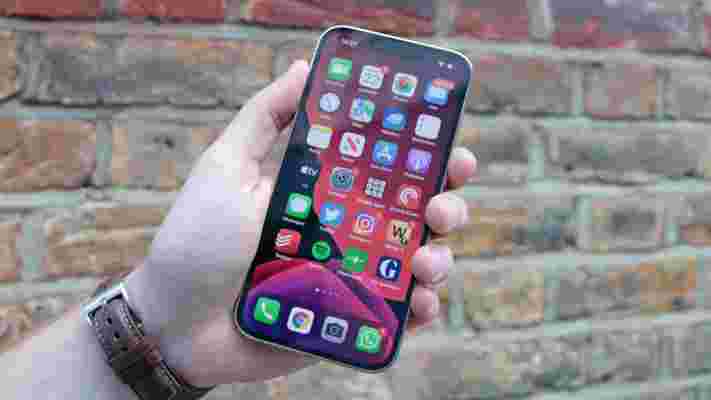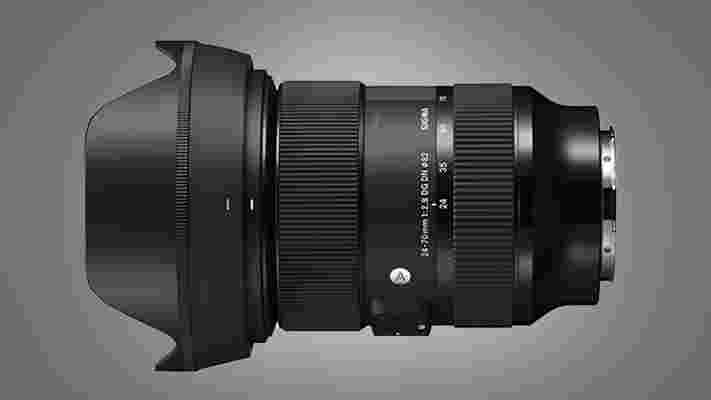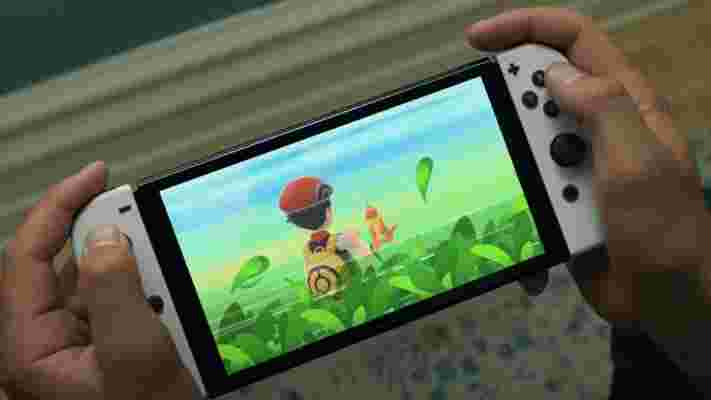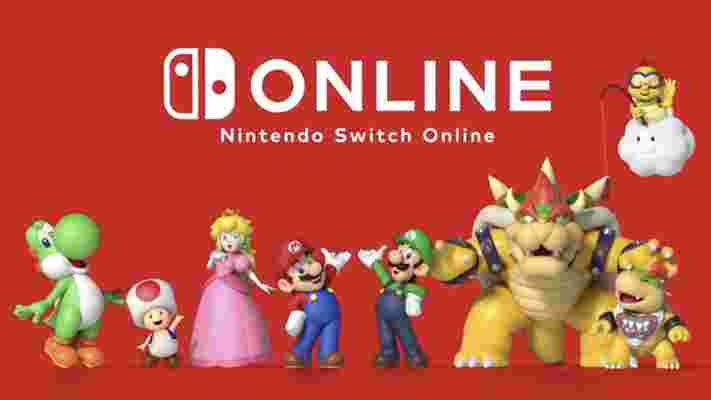It looks as if the iPhone 14 is on track for a launch in September, as following trial production which reportedly began on schedule in February , we’re now hearing that the phone has entered the engineering validation stage.
That’s according to analyst Jeff Pu of Haitong International Securities, who, in a note seen by 9to5Mac , claims to have learned this via a supply chain survey. We weren’t particularly expecting delays but they’re always possible, especially in the age of Covid, so this is a reassuring sign.
Pu shared other details of the iPhone 14 range too, saying that the iPhone 14 Pro and iPhone 14 Pro Max will get a new 48MP main camera, as we’ve heard before , and that the entry-level model will have a larger screen than last year (due to there reportedly being no iPhone 14 mini).
Pu also adds that the starting price of the iPhone 14 is likely to be similar to that of the iPhone 13 , a phone which begins at $799 / £779 / AU$1,349. This also is something that we’ve heard before .
However, while that all sounds promising – and likely, given that most of this has been rumored repeatedly – the iPhone 15 range could be in for even bigger upgrades.
According to Pu, the iPhone 15 Pro and iPhone 15 Pro Max will likely have a periscope camera with 5x optical zoom, up from 3x optical zoom on current models. Which again, is something that other sources have also pointed to.
And away from iPhones, Pu has claimed that Apple will equip some 2024 iPads with OLED screens. Specifically, Apple will apparently bring this display technology to 11-inch and 12.9-inch models, which are sizes we’re currently only seeing used by the iPad Pro range.
That doesn’t necessarily mean it will be the iPad Pro range that gets OLED screens though, since future iPad Pros might have larger screens , so we could see the iPad Air range perhaps move up to the current Pro sizing.

Analysis: is the iPhone 15 worth waiting for?
Given that the iPhone 15 will possibly have a big camera upgrade, you might be wondering whether it’s worth skipping the iPhone 14 and waiting for that – assuming you don’t upgrade your phone every year.
So, should you? Well, it’s much too early to definitively answer that, since we don’t even know for sure what the iPhone 14 range will offer, let alone the iPhone 15.
But the key upgrades this year are looking likely to be limited to the Pro models, and to take the form of camera cut-outs in place of a notch (so a change in design), and a 48MP main camera, in place of the current 12MP one.
As for the iPhone 15, the Pro models there may have 5x optical zoom, and will perhaps hide Face ID under the display (meaning just one small punch-hole cut-out would be needed).
So for both years we might be looking at changes to the design and the camera, with the iPhone 15 Pro likely being far better on both fronts. But with potentially significant upgrades this year too, it likely won’t be a mistake to buy in September – at least if you’re going Pro. The standard iPhone 14 so far sounds far less exciting .
Sony’s new zoom lens shows it still has the edge on Canon and Nikon
Sony's mirrorless cameras had a big head-start on their Canon and Nikon rivals – and its new zoom lens is a reminder that it still holds the edge on those two giants when it comes to glass.
Canon and Nikon have done well to bolster the lens ranges for their RF and Z-mount cameras, which only arrived in 2018. They respectively now have 26 and 27 lenses available for their mirrorless cameras, even if many of those lenses are out of stock. Both companies also let you adapt lenses made for their older DSLRs.
But Sony's new FE 24-70mm f/2.8 G Master II, and the E-Mount lineup it's part of, shows that Canon and Nikon are still playing catch-up. This new mid-range zoom is another classy addition to its 'G Master' lineup, which are its top-range pro lenses. And tellingly, it's a second-generation follow-up to the original lens Sony launched back in 2016.
Canon and Nikon have unmatched heritage when it comes to DSLR lenses, but neither is yet at the stage of making refined sequels to their full-frame mirrorless lenses. The FE 24-70mm f/2.8 G Master II is the smallest and lightest f/2.8 G Master lens in its range. And with this launch, that range of E-mount lenses now stands at an impressive 67 lenses.
Of course, it isn't just a numbers game, and some of those lenses do need updating. But we've been bowled over by the quality of Sony's recent G Master lenses, from the Sony FE 70-200mm f/2.8 GM OSS II to the Sony FE 50mm f/1.2 GM , which we said, "sets a new benchmark for speed and optical quality". And this new mid-range zoom, while also undoubtedly expensive at $2,300 / £2,099 (around AU$3,700), promises to follow in their footsteps.
If you missed the announcement, the FE 24-70mm f/2.8 G Master II weighs only 695g – that's 22% less than its predecessor and considerably lighter than its Canon, Nikon, and Sigma equivalents. The design also promises to serve up some delicious bokeh and be ideal for video shooters, thanks to the inclusion of four XD Linear motors for fast, quiet autofocus and a handy zoom 'smoothness' switch to tweak the zoom ring's torque.
Other bonuses include a ‘floating focus’ mechanism to help control common issues like chromatic aberration and a fluorine coating to keep moisture at bay. We'll wait to test the FE 24-70mm f/2.8 G Master II before reaching any firm conclusions, but on paper, it's shaping up to be the best lens of its kind for photos and video.
The E-mount family it slots into also remains a step ahead of Canon and Nikon, despite some bold proclamations from those two heavyweights about their mirrorless lens plans.
Analysis: Canon and Nikon in Sony's slipstream

Sony's lens lead over Canon and Nikon isn't too surprising when you consider it launched its first full-frame mirrorless camera back in 2013 – a full five years before its rivals. But Canon and Nikon haven't helped themselves by being resistant to opening up their RF and Z mounts to third-party manufacturers.
In its bid to disrupt the camera world, Sony let the likes of Sigma, Tamron and Zeiss make autofocus-equipped lenses for its E-mount. This means Sony camera owners now have a huge range of mirrorless lenses to choose from – and it's a cake that Sony is happily decorating with impressive creations of its own like the new FE 24-70mm f/2.8 G Master II.
This is why Canon and Nikon have recently made some bold proclamations about their mirrorless camera lens roadmaps. Canon recently stated that it plans to maintain its pace of releasing eight new RF lenses per year for the next four years, while a few weeks ago Nikon promised in a plan that it'll be making 22 more Z-mount lenses by 2025.
Those are bold statements that, despite some inevitable pandemic-related slowdown, should see both camera giants start to catch up with Sony in terms of sheer numbers. Particularly if they start to open up their mounts to third-party manufacturers, like Fujifilm has recently.
But for now, lenses like the FE 24-70mm f/2.8 G Master II show that Sony doesn't intend to let its lead slip – and the quality of those lenses should be a good match for whatever cameras it had planned for 2022, like the rumored Sony A7R V.
Is the Nintendo Switch worth it in 2022?
Is the Nintendo Switch worth it in 2022? Nintendo’s portable powerhouse was a huge success when it launched back in March 2017, making it the company’s fastest selling home console to date, but that was five years ago – a whole other generation of consoles has been released since then.
The Switch’s remarkably strong year-one line-up cemented its early appeal. Launch titles like The Legend of Zelda: Breath of the Wild , alongside early hits like Super Mario Odyssey , Splatoon 2, and Mario Kart 8 Deluxe allowed Nintendo to avoid the dreaded software drought that plagued the Wii U, and led to the Switch outselling its predecessor just ten months after launch.
In the years since Nintendo has continued adding incredible games to the console – though, the Switch's age is starting to show, with the handheld’s tech struggling with large open worlds, like those in Pokémon Legends Arceus .
There have been console revisions, such as the Nintendo Switch Lite and Nintendo Switch OLED , which have kept sales of the system strong, though haven’t significantly increased the power of the machine. Meanwhile, the Nintendo Switch Online subscription service (and its premium Expansion Pack tier) has only improved in recent years, now offering a cloud-based selection of NES, SNES, N64 and Sega Genesis/Mega Drive titles which are updated on a semi-regular basis.
While the Switch seems like an essential purchase for handheld gaming, there are notable drawbacks that make it lag behind home consoles like the PS5 , Xbox Series X and Xbox Series S . If you’ve yet to buy Nintendo’s current-gen console, and are seriously considering it, read on to find out if the Nintendo Switch is worth it in 2022.
Nintendo Switch is widely available

At launch, all three models of Nintendo Switch initially struggled with availability. It was incredibly common for the Switch to completely sell out across both online and high street retailers.
Thankfully, Nintendo Switch stock has normalized in recent years, and the console hasn’t been as badly affected by the ongoing component shortages as, say, the PS5. Right now the base Nintendo Switch, Nintendo Switch Lite, and Nintendo Switch OLED consoles – and some of the branded special editions – are all readily available at retailers like Amazon. And you can check out our Nintendo Switch bundle deals hub for all the best prices today.
Nintendo Switch consoles - an overview of each model
The standard Nintendo Switch model is the one that launched back in 2017, and of the three models currently available. It arguably provides the sweet spot in terms of price and specs, as the base Switch model can be played in docked mode with a TV with a resolution cap of 1080p, or on the go in portable mode, which caps at a lower 720p resolution.
The Nintendo Switch, unfortunately, doesn’t support 4K resolution . That means that without upscaling, playing in docked mode on one of the best 4K TVs may result in a blurrier image than you’d like. As such, we’d recommend a 1080p display as the optimal way to enjoy Switch games when playing in docked mode.
That being said, the upcoming Nintendo Switch Sports is strongly rumored to be implementing AMD’s open-source FidelityFX Super Resolution . This algorithmic tech can upscale lower resolutions up to a crisp 4K image without impacting game performance. Nintendo may plan to use FidelityFX for future games, too, which could be fantastic for upcoming titles like Xenoblade Chronicles 3 , Breath of the Wild 2 , and Metroid Prime 4 .

If you want your Switch to be a strictly portable system, the Nintendo Switch Lite is a good option. It’s cheaper than the base model and is slightly smaller, but do keep in mind that, unlike the base model, the Lite’s Joy-Con controllers aren’t detachable, and the console can’t be played on the TV.
Finally, there’s the premium Nintendo Switch OLED, which offers the best image quality of all three models thanks to the unit’s crisp 720p OLED panel . It’s another fantastic choice if you’re planning to go portable mostly. However, it’s a bit pricier than the base Switch model and playing in docked mode offers no tangible benefits. If you want to play your games with a more vivid color profile while you’re on the go, though, the Nintendo Switch OLED is the way to go.
The Nintendo Switch OLED has other perks. It has 64GB of internal storage, double that of the base model. That’s still not much in the grand scheme of things, and you’ll want to invest in an extra microSD card for more storage, especially if you plan on downloading and playing a lot of games.
The Switch OLED also features an improved kickstand on the back of the console. It’s now much wider and sturdier than the one found on the base Switch model, making the OLED ideal for portable play.
Nintendo Switch Online

Nintendo Switch Online is the Switch’s online subscription service, which debuted shortly after the console launched. The paid service became a requirement to access online multiplayer in 2018, and also gave access to cloud saves and a selection of NES and SNES titles via dedicated apps.
The paltry offering wasn’t received well, and didn’t seem to address the core issue that was Nintendo’s infamously spotty connection quality. Disconnects were common, and the service was well behind the online infrastructure found with PS5, Xbox, and PC.
The service has arguably come on leaps and bounds since then, with Nintendo steadily improving its online connection quality. A premium tier, Expansion Pack, was also added in 2021, which lets players play N64 and Sega Genesis/Mega Drive titles, as well as access to DLC packs such as Animal Crossing: New Horizons ’ Happy Home Paradise and Mario Kart 8 Deluxe’s Booster Course Pass .
You certainly get more bang for the buck with Nintendo Switch Online now than you did a few years ago. It’s still by no means perfect - and the Expansion Pack tier will be too expensive for some - but the service continues to improve year-on-year, consistently adding value to the package. Especially when you can get it for less with one of these cheap Nintendo Switch Online deals .
Is the Nintendo Switch worth it?
Owing to its extensive game library and continued first-party support, the Nintendo Switch is still a worthwhile purchase in 2022. And you don’t run the risk of buying a console that Nintendo is about to imminently replace, as the company confirmed the Switch is just halfway through its lifecycle , with the succeeding Nintendo Switch 2 (or Nintendo Switch Pro) a good few years away.
Despite shortcomings like the relatively low storage space, lack of 4K support, and imperfect online infrastructure, the Nintendo Switch still shines as a fantastic portable hybrid that’s loaded with excellent exclusive games, worthwhile subscription benefits, and an impressively affordable price.
While we do wish Nintendo would launch a model with updated specs, we’re still very impressed with the console’s longevity and high-quality library of games. With that in mind, we believe there’s never been a better time to purchase a Nintendo Switch, no matter which of the available models suits your fancy.
Nintendo Switch OLED Vivid or Standard mode? | How to connect Bluetooth wireless headphones to Switch | How to enable dark mode on Switch | How to clear the cache on Nintendo Switch | How to delete save data on Nintendo Switch